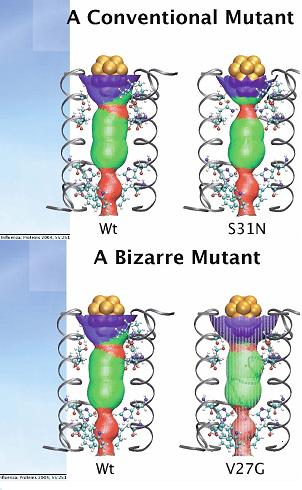The study was recently published in the journal Proteins

Direct link to this page: https://www.hayadan.org.il/hujivirus070904.html
The fight against viruses is sometimes frustrating. Even when they find out how to destroy them, they find a way to defend against the antiviral treatment and neutralize it.
How exactly do they do it? In a cover article recently published in the journal Proteins, Prof. Isaiah (Shay) Arkin from the Department of Biological Chemistry at the Institute of Life Sciences at the Hebrew University of Jerusalem reveals how the influenza virus changes its shape and succeeds in neutralizing the antiviral drug Simtral (generic name).
This discovery has important implications because it may lead drug researchers to develop new and more effective means of blocking the influenza virus and other viruses.
"The flu", Prof. Arkin emphasizes, "is a major cause of death, although many tend to see it as an unpleasant seasonal nuisance". In the US, the flu is the main cause of death from infectious diseases, claiming about 40,000 victims a year, especially among the elderly population.
Prof. Arkin's research team from the Hebrew University included the students Peleg Astrakhan and Itmar Kass, as well as Dr. Matt Cooper from the University of Cambridge in the UK.
The drug Symtral, which is given at an early stage of the onset of flu symptoms, is aimed at destroying the virus. The components of the drug bind to the virus and block its central channel, which is a mechanism for regulating acidity. Maintaining the proper level of acidity is essential for the continued existence and functioning of the virus.
However, instead of surrendering, the flu virus engages in its own resistance actions: either by narrowing its channel to prevent the blocking elements in the drug from binding and creating a blockage; or by widening the channel so that the blocking elements can enter it but cannot block it completely (see illustrations for illustration). Prof. Arkin notes that the latest action is surprising and unexpected.
While the very resistance of the virus to the drug was already known, Prof. Arkin says that for the first time the actual activity behind the action of the resistance has been demonstrated. This is because until now the researchers have only concentrated on examining the binding action of the blockers to the virus, and not on the process that takes place inside the channel itself, and have had difficulty seeing the full picture.
"From now on", Prof. Arkin concludes, "in antiviral studies, this new information on the mutating capabilities of the influenza virus must be taken into account."
The bacteria knower
https://www.hayadan.org.il/BuildaGate4/general2/data_card.php?Cat=~~~943089811~~~244&SiteName=hayadan
